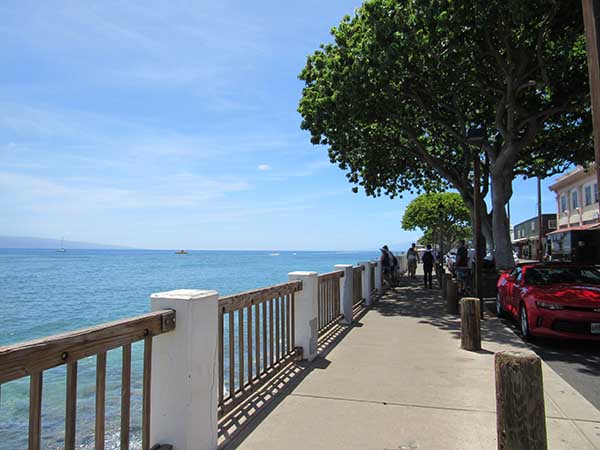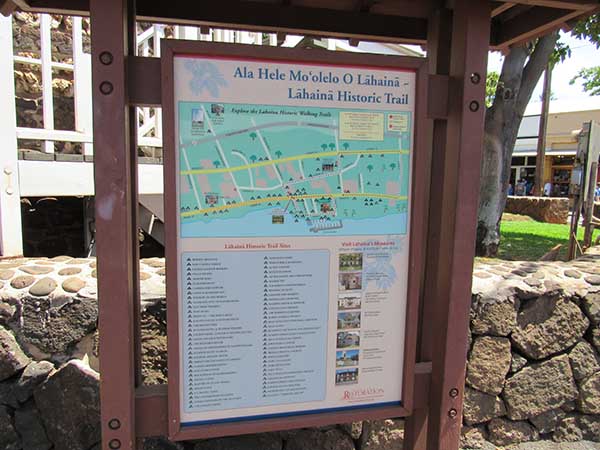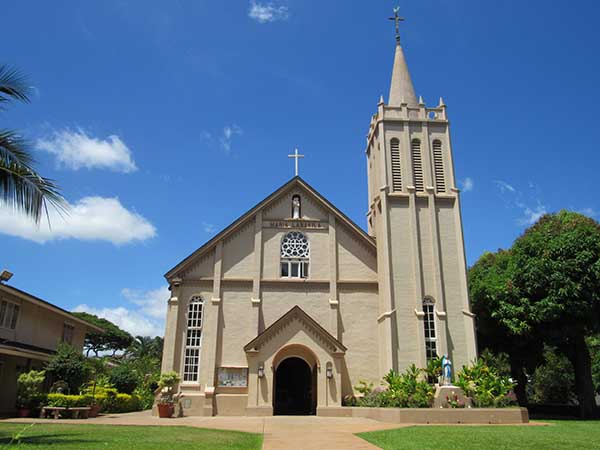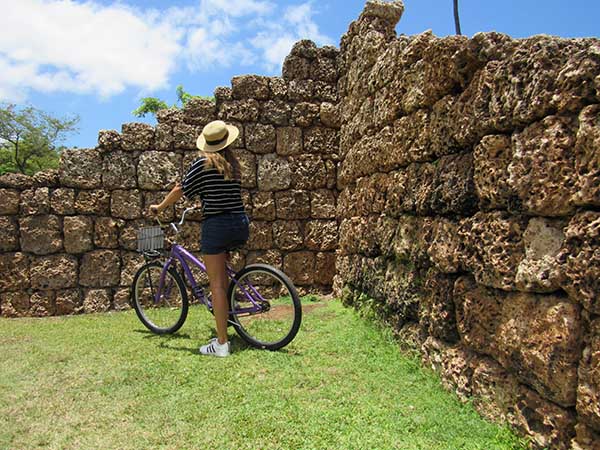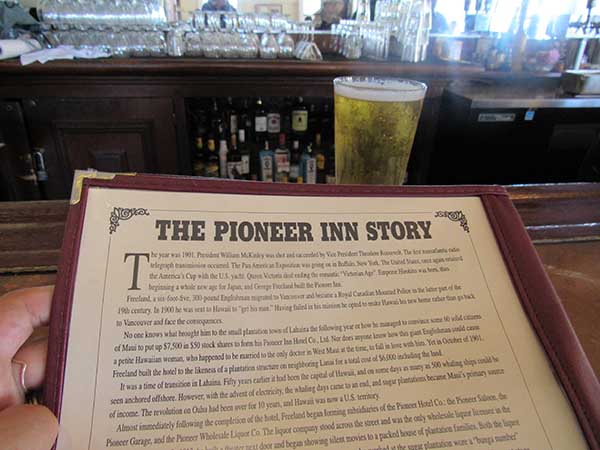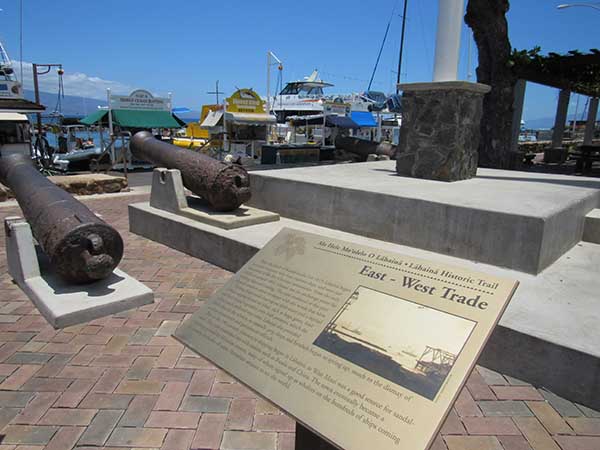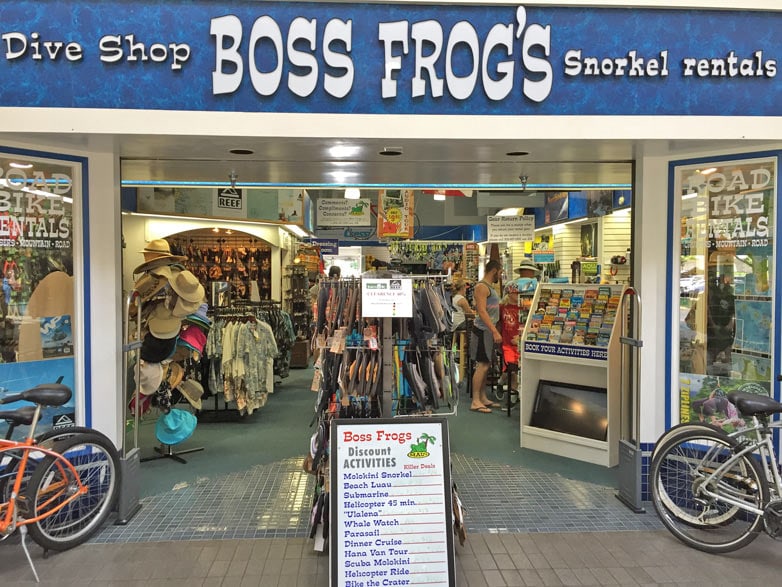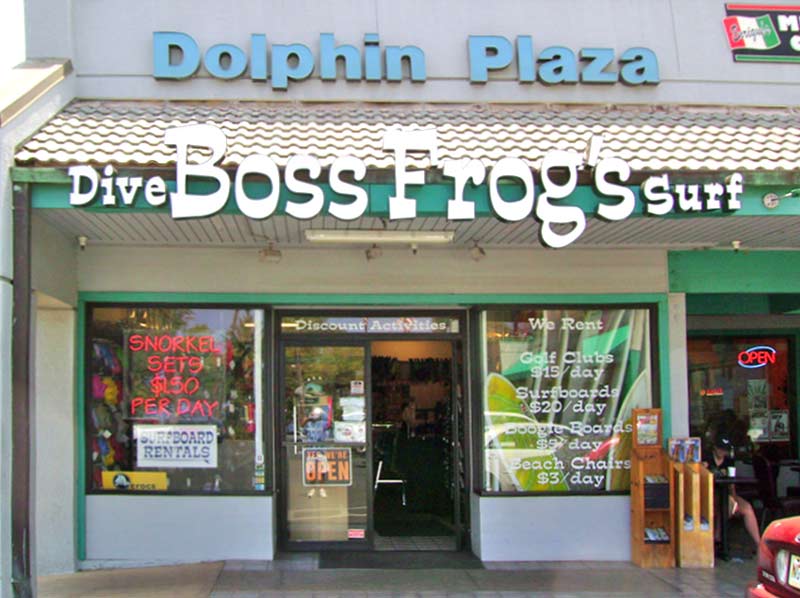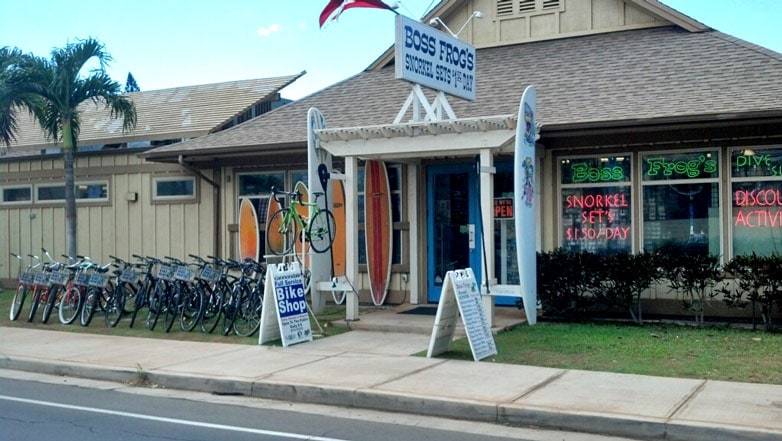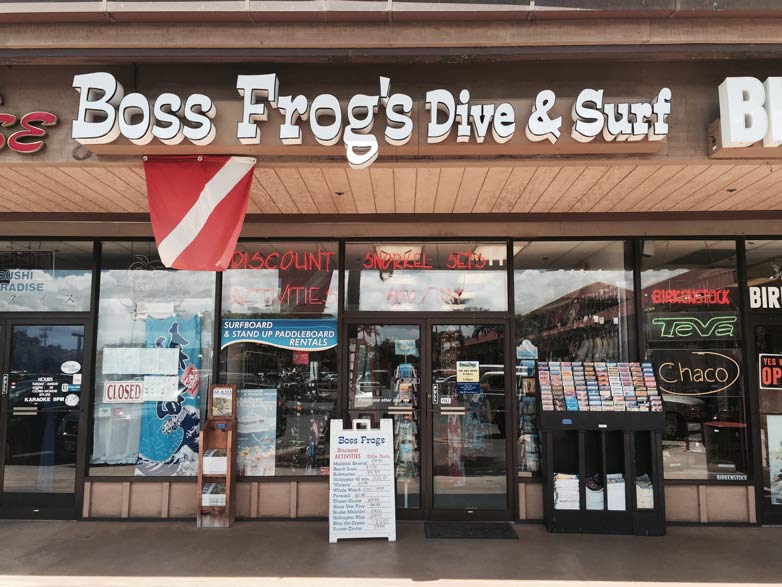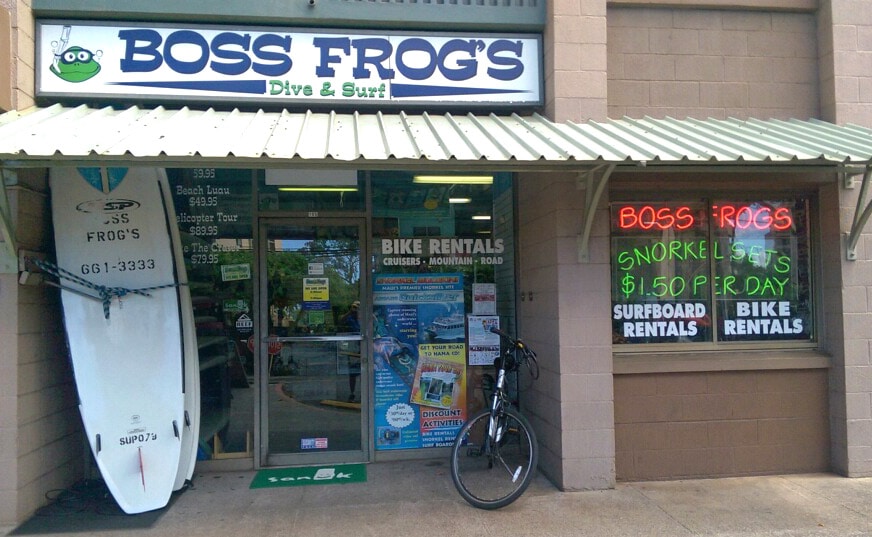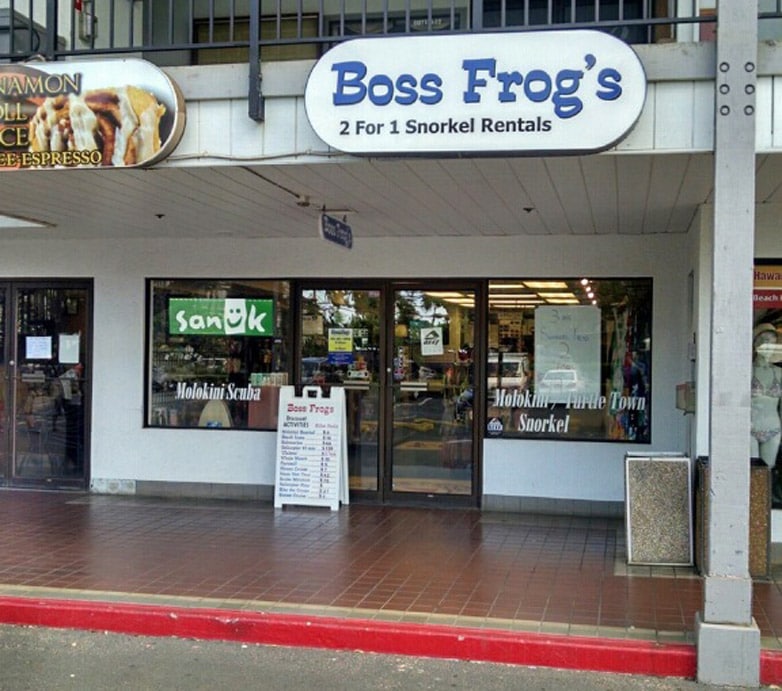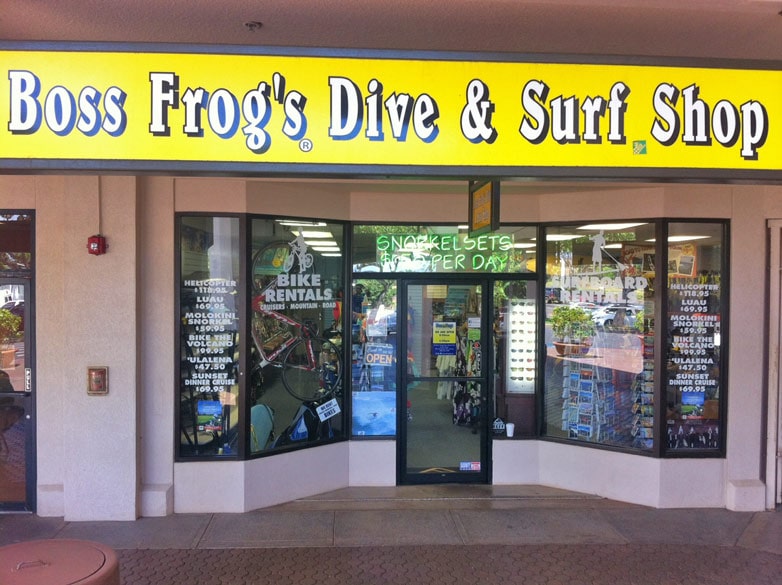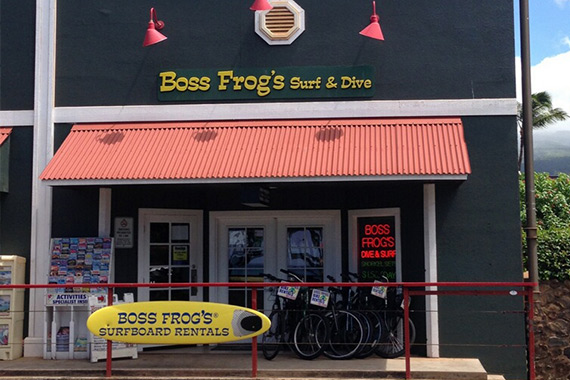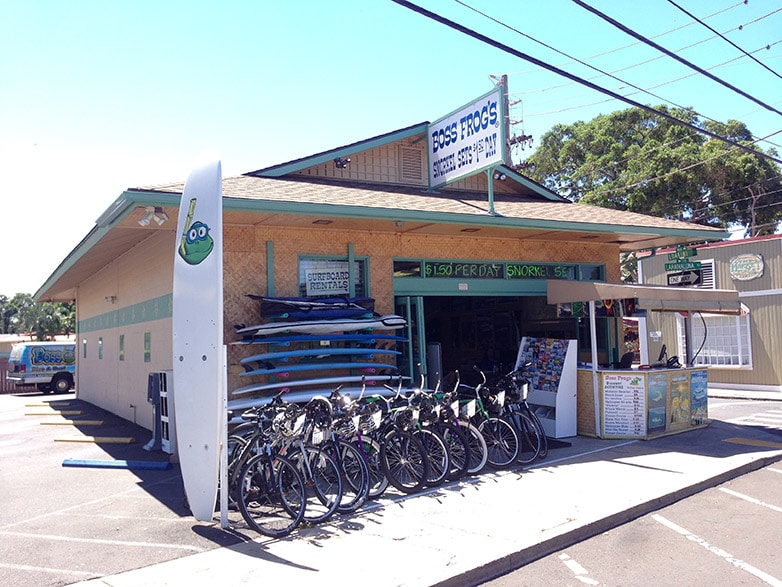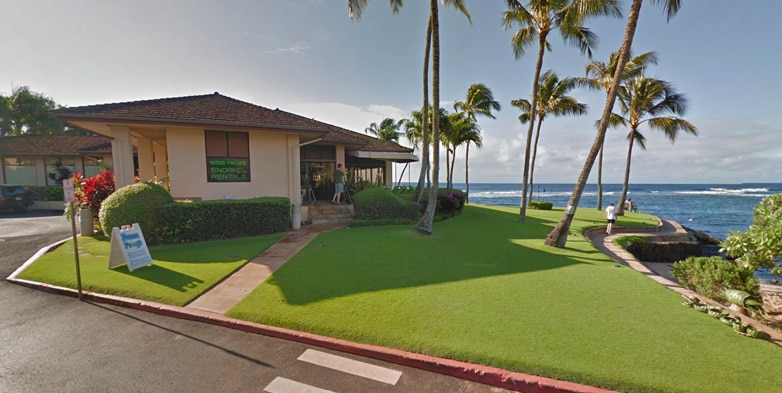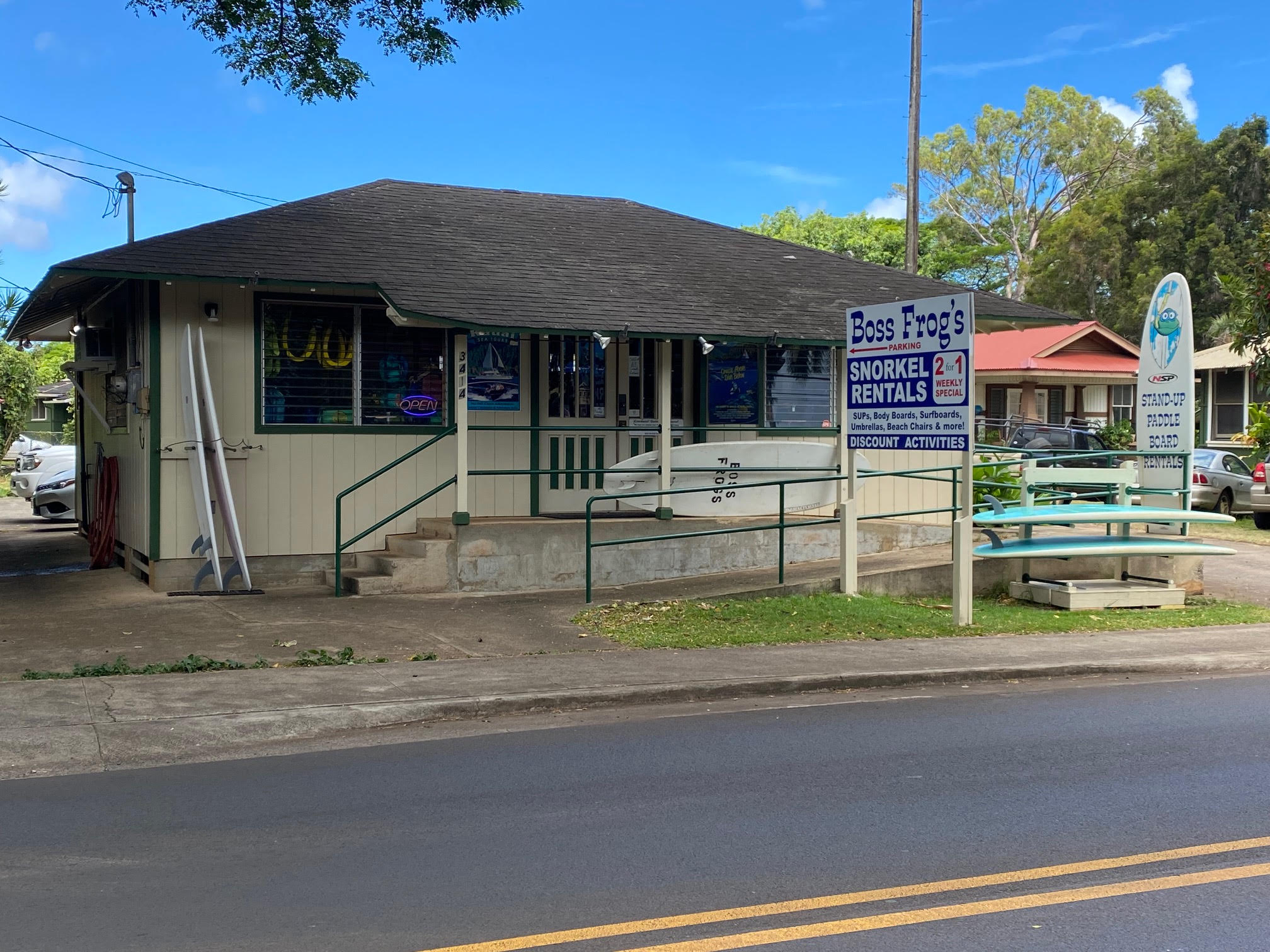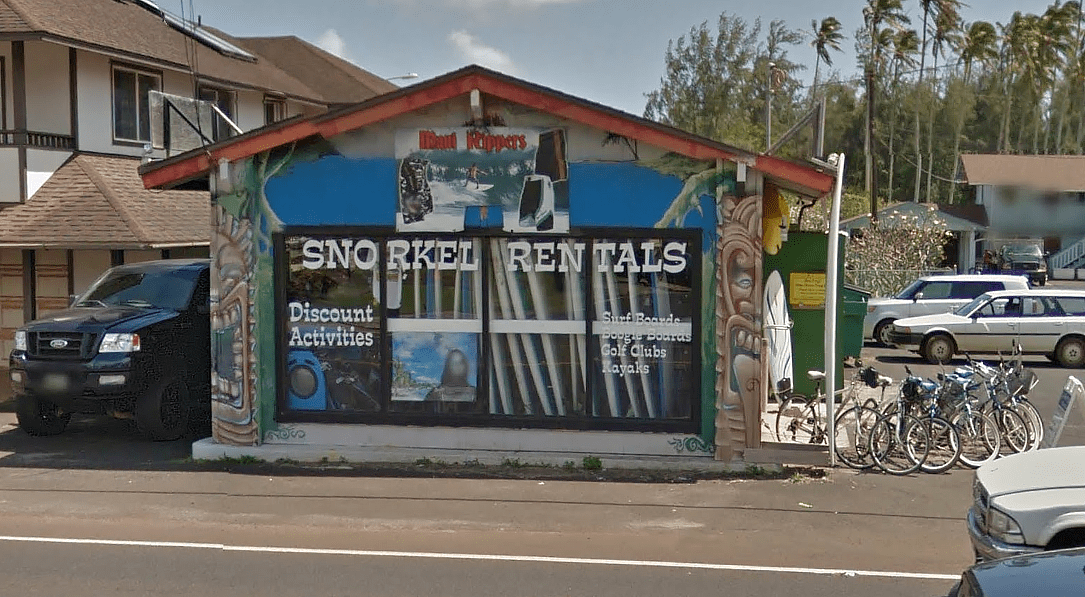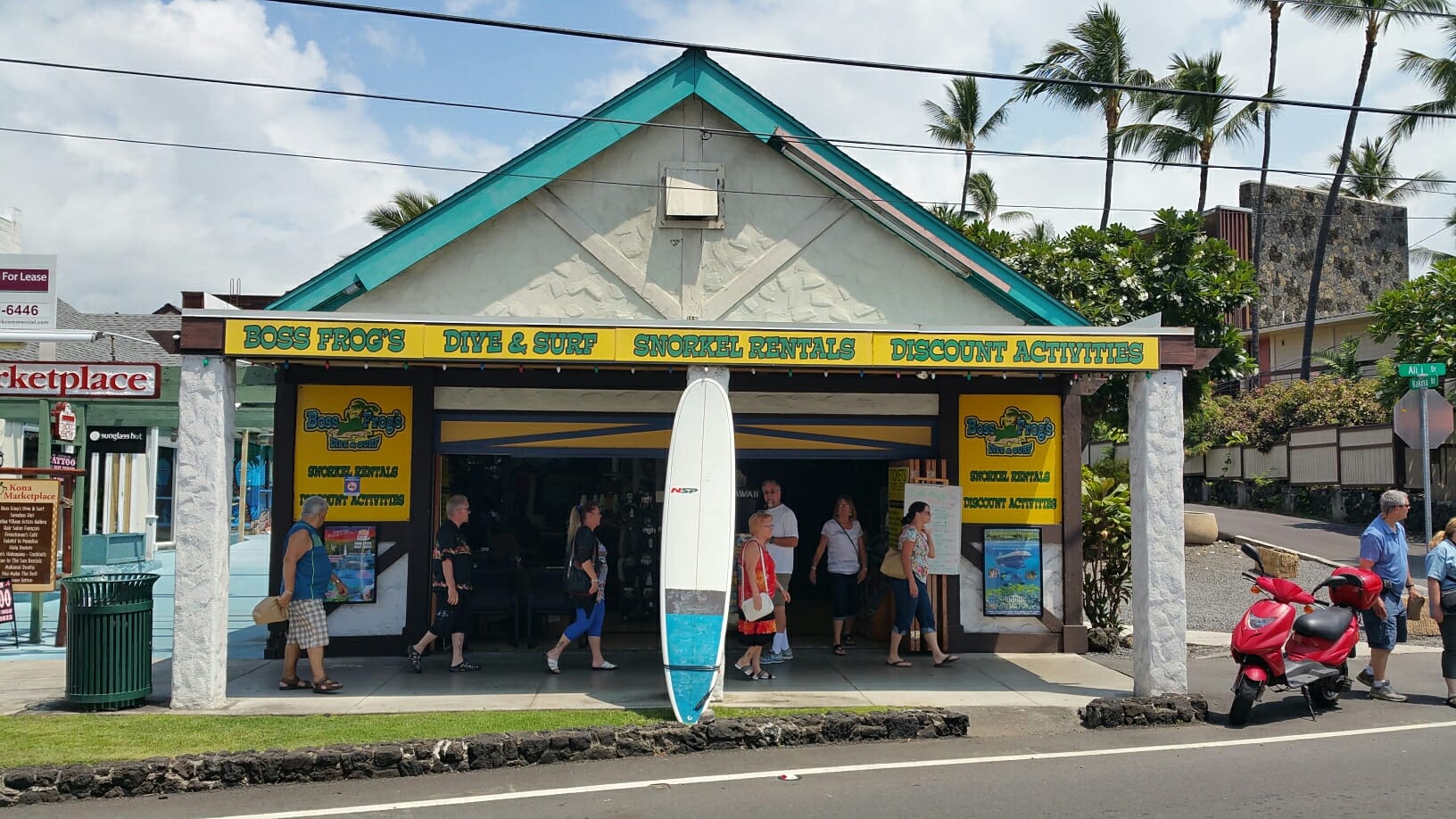Lahaina History By Bike
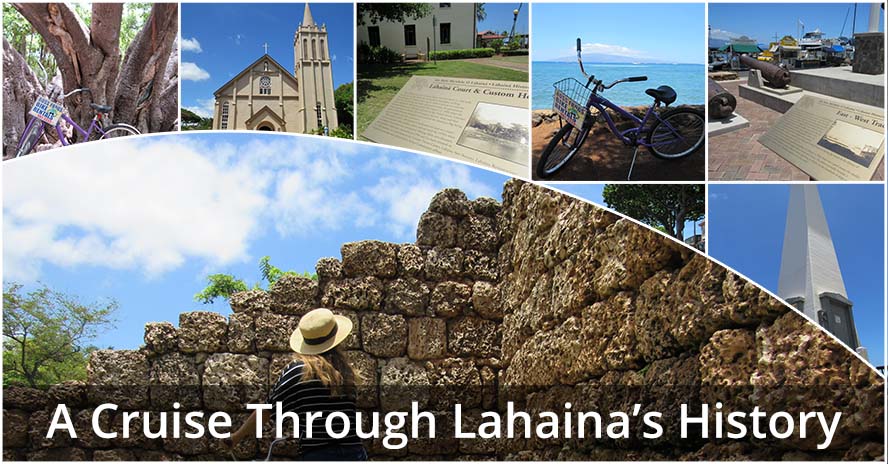
Lahaina is one of the most bike friendly towns on the island of Maui (possibly in Hawaii) with plenty of worthy stops along Front Street to shop, eat and hit happy hour for one of those famous Mai Tais. Our mission today, however, is to soak up some of the rich Lahaina history, which was once the first capital of the Kingdom of Hawaii, a busy whaling port and a plantation settlement.
Our first stop is Boss Frog’s to pick up beach cruiser bicycles, complete with baskets for cameras and sunscreen. The friendly staff also helped us to identify the best route to take along the Lahaina Historic Trail (Ala Moolelo O Lahaina), a self-guided tour of significant sites throughout Lahaina. Dozens of historic sites have been labeled with informative bronze plaques, each providing explanations about an important point of interest from Lahaina history.
And we’re off, the wind in our hair and Maui sunshine on our backs. Front Street is a straight stretch along the ocean, lined with rock walls and plantation style architecture. The Historic Walking Tour map was easy to follow and while we made many stops along the self guided tour (there are 28 of them to choose from) here are some of our favorites:
At the waters edge we found a plaque indicating the location of the Hauola Stone, which was used by ancient Hawaiians as a healing place. The stone that is visible in the water was used by Kahuna (priests) of medicine to help cure illnesses.
Along the same seawall is the first lighthouse in all of Hawaii. Commissioned in 1840 by Kamehameha III, it was built to light the way for incoming whaling boats. The locally produced whale oil of the time was used to keep it burning. The lighthouse was rebuilt in 1905, and dedicated by the US Coast Guard in 1916.
Past the many tour boats that now line the harbor and across the street is the Lahaina Courthouse. This location is most notable for the lowering of the Hawaiian flag in 1898, followed by the raising of the American flag, marking the formal annexation of Hawaii by the United States. The courthouse served as a palace for King Kamehameha III in the early 1800s, before being rebuilt after a storm, to later act as a courthouse, post office, and government offices. There is a gift shop on the lower level; and upstairs, visitors will find the Lahaina Heritage Museum with FREE admission.
Behind the courthouse, we can’t miss the most iconic landmark in Lahaina, the Banyan Tree. This amazing feat of nature covers an entire acre. It was planted in April, 1873, to mark the fiftieth anniversary of Protestant missionaries in Lahaina. Residents and visitors have always found solace in the shade of this magnificent tree. At one point in Lahaina history, the owner of the hotel across the street spent so much time here that his mail was delivered to the tree, deposited in a mailbox fastened to a stump. That stump can now be found in the courtyard at the hotel and in keeping with our theme of history, we peddled to the Pioneer Inn to check it out and grab some lunch.
Greeted by a noisy parrot, it is easy to imagine the building as it was in the early 1900s when it served as the only hotel on the west side of Maui. Numerous old Hollywood films have been shot here and many a sailor has found comfort in the open air bar. The beer is still cold and they make a mean fish taco to enjoy while reading up on the colorful history of the place (menus include a page of history well worth the read).
Sufficiently hydrated, we were back on the road (perhaps appropriately) heading towards the Old Prison. In the later half of the 1800s, if you were caught being drunk and disorderly, dangerous horse riding, deserting ship, or working on Sunday, you could be “Stuck in Irons House” or Hale Paahao. Built out of coral block from the old harbor fort, the walls of an exotic courtyard surround the original jail, with a cell staged to include one of those disorderly convicts. A manifest on the wall lists the convictions offended in 1855 including ‘disturbing the quiet of the night’ and ‘furious riding’.
Unsure if our riding would be considered ‘furious’ we peddled half a block to Hale Aloha. Meaning “house of love”, this house was an offering to God in appreciation for Lahaina escaping the smallpox epidemic in the 1800s. It was finished in 1858, after 5,000- 6,000 citizens on Oahu lost their lives to smallpox. The structure was restored in 1974.
Cruising past the old plantation houses that continue to be home to the town’s residents, the beautiful architecture of the Maria Lanakila Church and the Seaman’s Cemetery we made our way back to Boss Frog to bid aloha to our trusty bicycles.
It was truly impressive how much history lies within just a few blocks of Lahaina, easily explored on foot or by bike, and yet could so easily be missed on the typical tourist track. We left that day with a new appreciation of the historic town and a much better understanding of how Maui and all of Hawaii became what it is today.
You too can learn Lahaina History on your next vacation to Maui. A map of the Lahaina Historic Trail can be found on lahainatown.com






